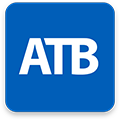Technology has become essential for small and medium-sized businesses across Canada to remain competitive. While some entrepreneurs view digital transformation as daunting, tech solutions offer practical ways to streamline operations, cut costs, and enhance customer service, often for a modest investment. Digital tools can also improve financial management and cash flow, making businesses more appealing to potential lenders and investors.
As of 2020, over 10% of Canadian SMEs sought financing for technological innovation to enhance operations.
AI adoption in Canadian SMBs—current trends
While only 6.1% of Canadian businesses currently use AI in their operations (up from 3.1% in 2022), according to Statistics Canada, 78% of SMBs are actively pursuing AI adoption, according to recent Microsoft research. This gap between interest and implementation is significant.
Adoption varies by sector, with technology, professional services, and retail leading the way. Early adopters report 31% productivity gains, improved work quality, and better customer satisfaction through automation of routine tasks.
Major barriers to adoption include widespread employee skill gaps—affecting nearly half of SMBs—persistent cybersecurity concerns, and significant upfront costs. Many businesses also struggle with a limited understanding of AI's practical applications, creating hesitation despite interest in the technology.
Tech tips by industry
Here are some examples of technology tools small and medium-sized businesses can incorporate to improve efficiency by industry.
Manufacturing
- Manufacturing management software: Enterprise Resource Planning (ERP) systems streamline operations by integrating production, inventory, and supply chain management into one platform.
- Automation and robotics: Adopting robotic systems and automated machinery significantly boosts efficiency while reducing long-term operational costs. These technologies minimize errors and increase production speed, giving businesses a competitive edge.
- Quality control systems: Smart quality control software helps maintain high standards, minimize waste, and ensure customer satisfaction. By tracking production quality and managing inspections systematically, business owners can protect their bottom line while meeting industry compliance standards.
Construction and specialty trades
- Project management software: Specialized construction software coordinates projects and teams through centralized communication, scheduling, and budget tracking.
- Time and attendance tracking: Mobile apps monitor worker hours across sites while ensuring payroll accuracy and labour compliance, reducing administrative work.
- Equipment management and inventory: Tracking software monitors usage, maintenance, and inventory, preventing breakdowns and maximizing productivity through proactive management.
- Safety and compliance tools: Digital platforms track incidents, inspections, and certifications. Proper documentation protects workers while reducing fines and insurance costs.
Oil and gas services
- Asset and fleet management: Smart tracking systems optimize vehicles and machinery across sites, reducing fuel and maintenance costs through efficient scheduling.
- Operational efficiency software: Field management tools streamline resources and provide real-time reporting for improved budget control and profitability.
- Safety and regulatory compliance: Digital platforms simplify documentation and risk assessments, reducing accidents and insurance costs while maintaining standards.
- Real-time data monitoring: Internet of Things (IoT) sensors track equipment health, enabling preventive maintenance to avoid repairs and minimize downtime.
Professional, civic and cultural services
- Professional services integration: Cloud tools coordinate staff, volunteers, and consultants while streamlining appointment booking.
- Member management systems: Digital platforms manage memberships, events, and donations while automating administrative tasks.
- Fundraising management: CRM systems organize campaigns and track donations, providing insights into giving patterns and simplifying reporting.
- Volunteer coordination: Specialized software manages volunteer schedules and communications, optimizing resource allocation for program delivery.
Restaurant and food services
- Point-of-sale (POS) systems: POS platforms integrate orders, inventory, payments, and accounting for comprehensive financial tracking.
- Online ordering: Digital platforms expand market reach through delivery options, adapting to modern consumer preferences.
- Inventory management: Smart systems track stock and analyze costs in real-time, improving margins through waste reduction.
- Staff management: Digital tools match staffing to demand while streamlining payroll and compliance.
Retail and e-commerce
- Integrated POS and e-commerce systems: These systems manage online and in-store sales, synchronizing inventory and expanding market reach beyond physical locations.
Tip: E-commerce integration opens access to broader markets, significantly improving sales potential and cash flow stability.
- Health and wellness services: Digital platforms streamline appointment scheduling, payment processing, and client management for fitness centers, wellness studios, and therapeutic practices.
Tip: Online booking systems reduce administrative overhead while maximizing schedule utilization and improving profitability.
- Creative and arts businesses: Online portfolio and marketplace platforms help artists and designers showcase work, process sales, and manage client relationships while minimizing overhead costs.
Tip: Digital tools reduce operational costs while increasing market visibility, leading to improved revenue opportunities.
The bottom line
When considering new technology for your business, look at what slows you down daily—maybe it's manually tracking inventory or struggling to coordinate staff schedules at your shop. Consider what you could automate to save time and reduce headaches.
When comparing costs, look beyond the price tag—a $200 monthly subscription that saves 20 hours of work could be worth it for your small business. Choose tools that won't become obsolete as you grow, like accounting software that handles 50 or 500 transactions equally well.
Ensure new technology integrates with your existing systems. For example, your POS system should communicate with your accounting and banking software.
Lastly, protect your business by choosing secure platforms. Look for tools that encrypt customer data and offer two-factor authentication.
Talk to an ATB Business Advisor about financing to support acquiring digital tools for your business.
